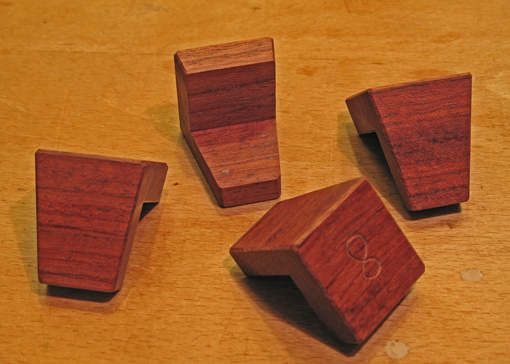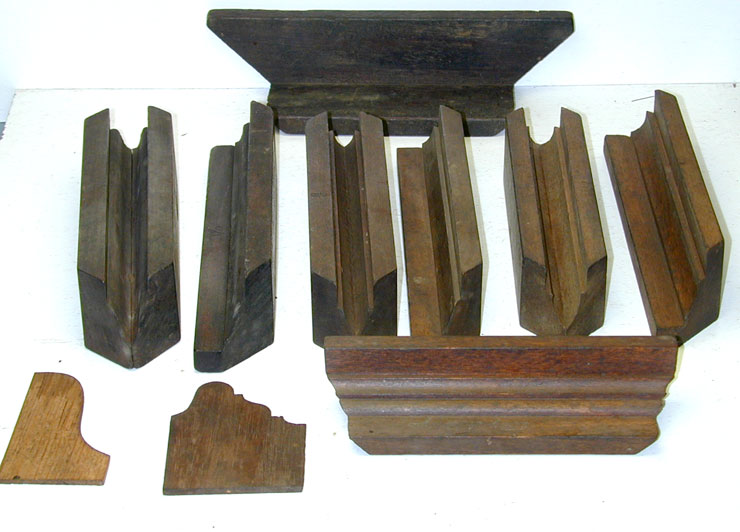I recently bought a selection of sash mitre templates, and in with them was this item, which I can't identify.

It's about five inches long, hardwood (possibly beech) and neatly made with an owner's name stamped on. It's planed into a cross shape, with the internal size of each arm being about 7/8". The ends are cut at an angle, which is about 1:4 or 75 degrees.

 .
.
I guess it could sit over a small moulding and allow you to saw or pare the ends to the right compound angle, but don't know why. Does anyone have any ideas?

It's about five inches long, hardwood (possibly beech) and neatly made with an owner's name stamped on. It's planed into a cross shape, with the internal size of each arm being about 7/8". The ends are cut at an angle, which is about 1:4 or 75 degrees.


I guess it could sit over a small moulding and allow you to saw or pare the ends to the right compound angle, but don't know why. Does anyone have any ideas?






